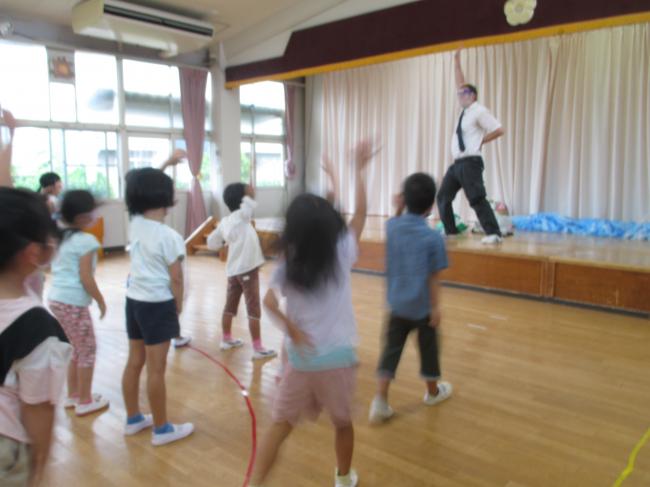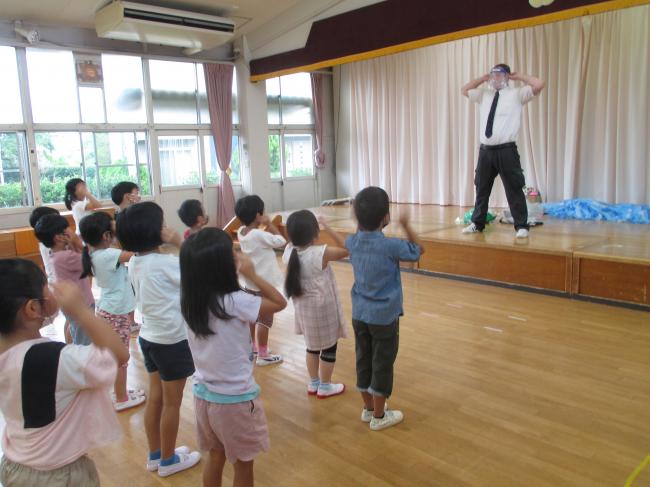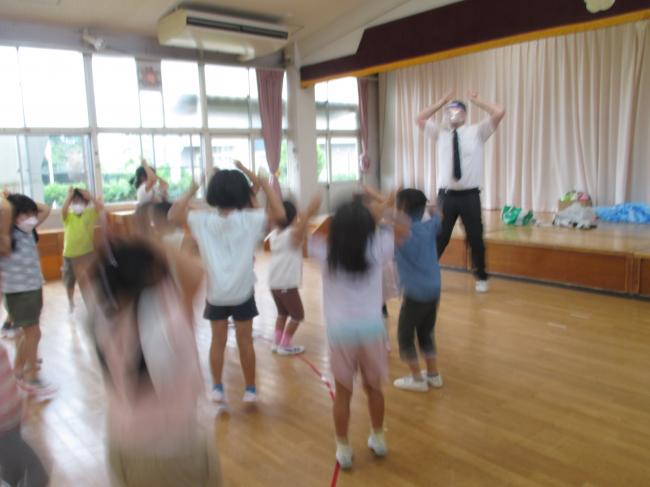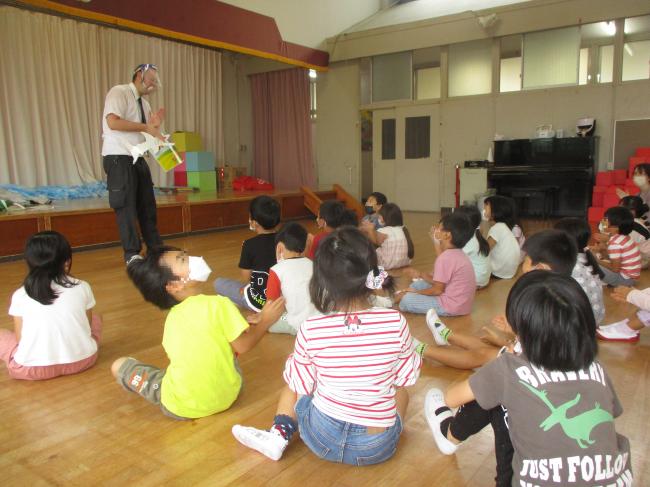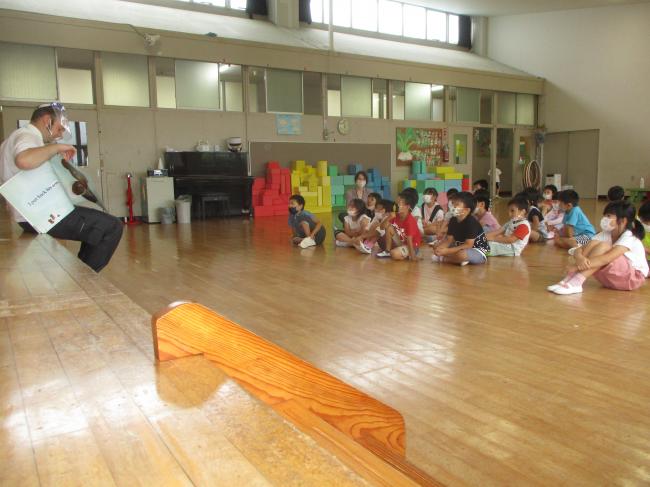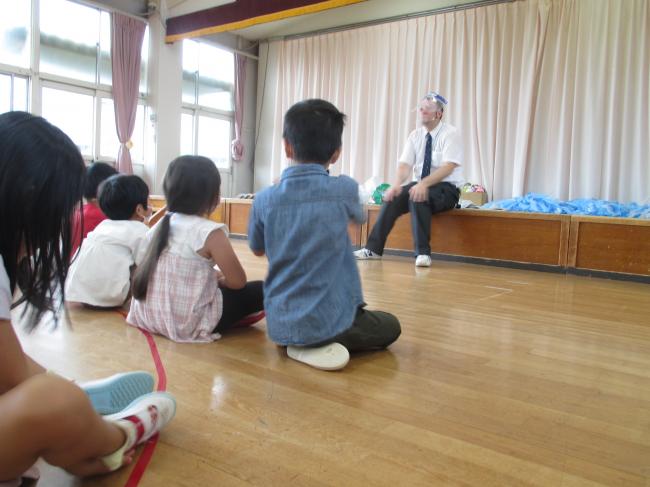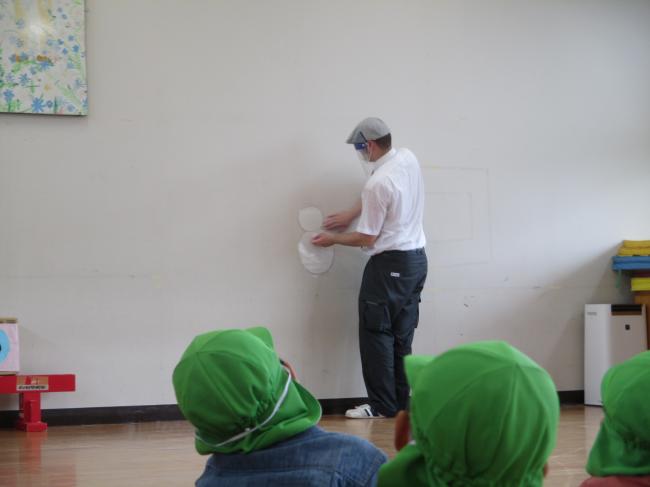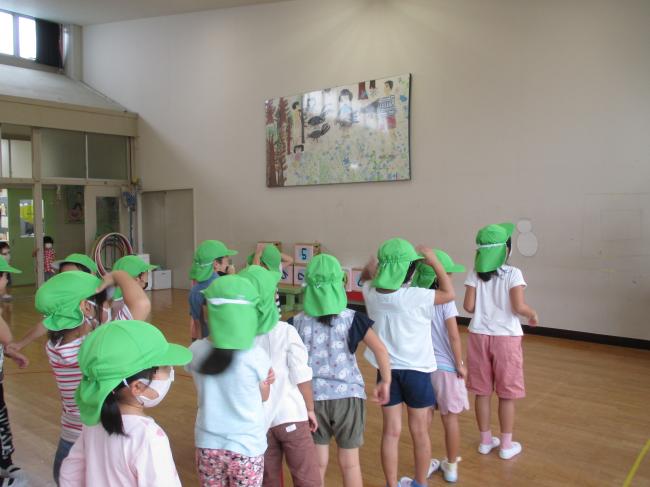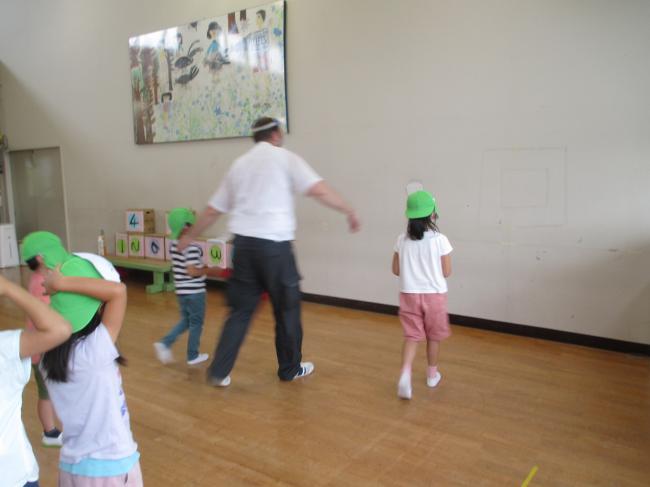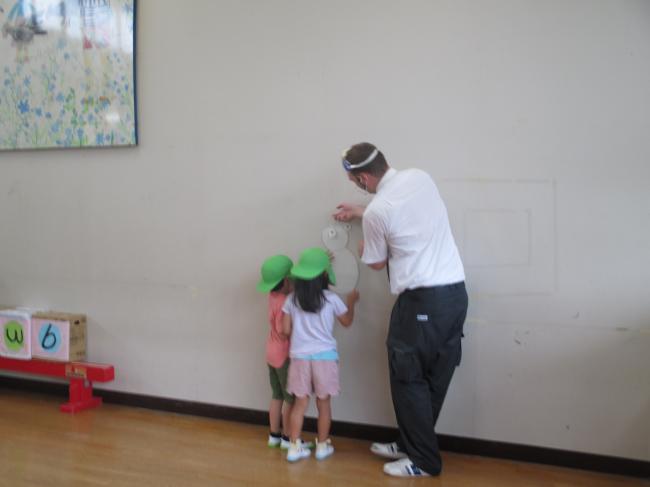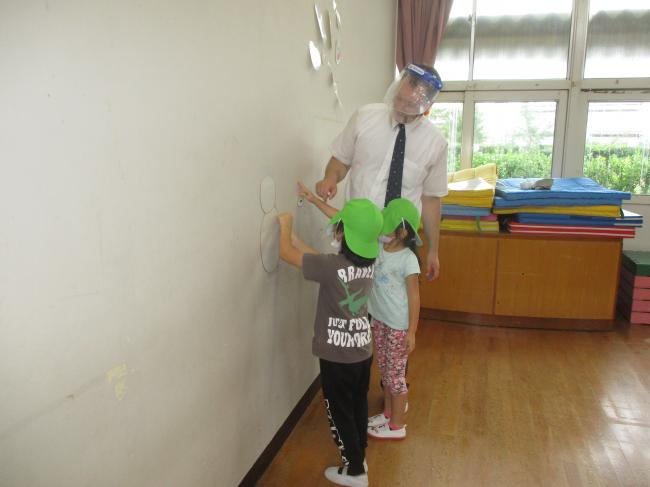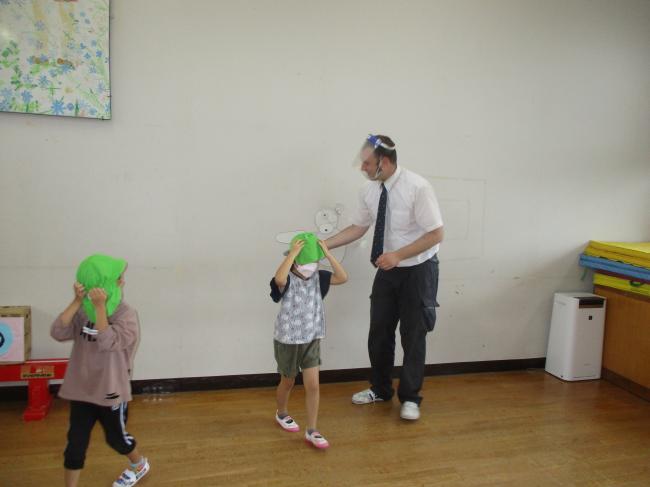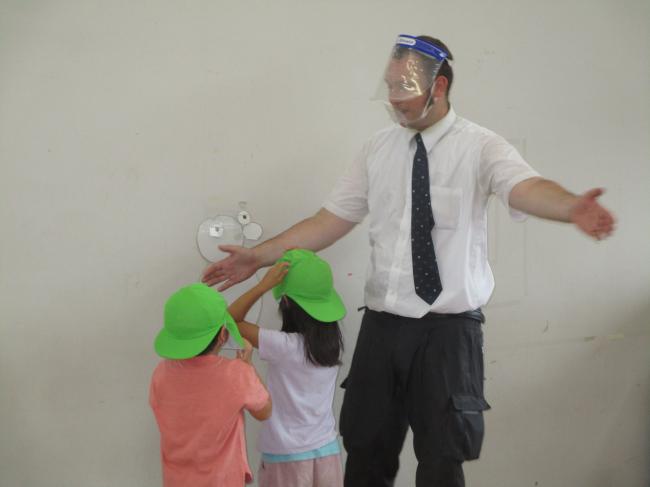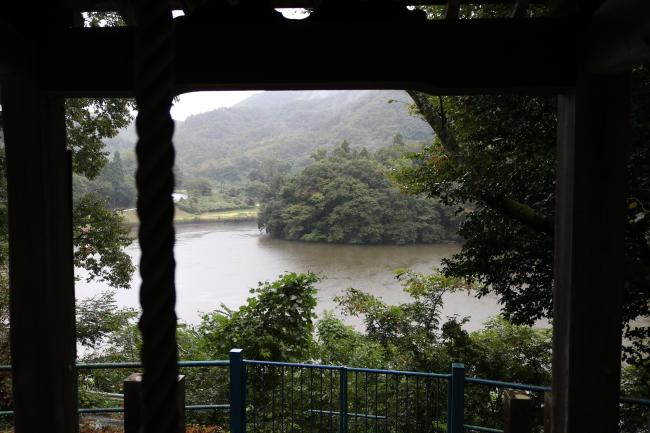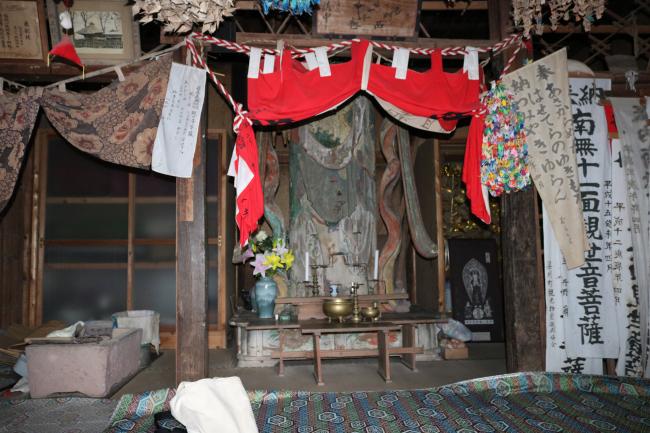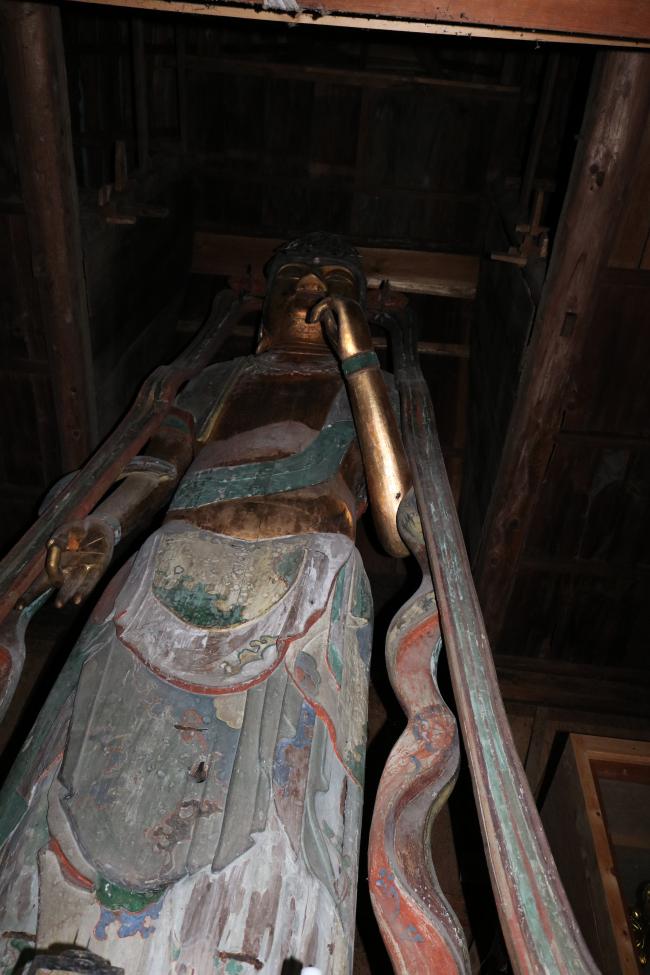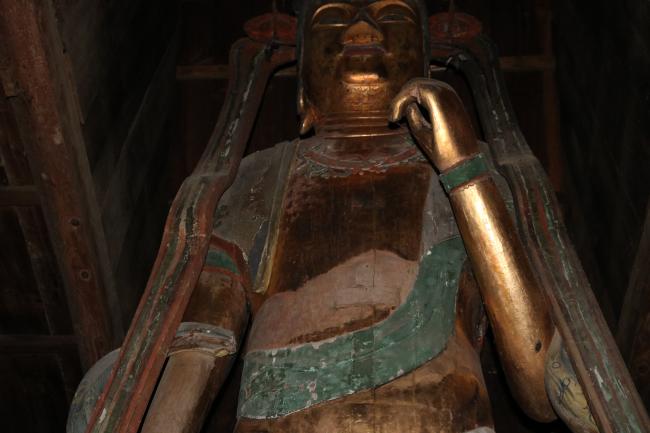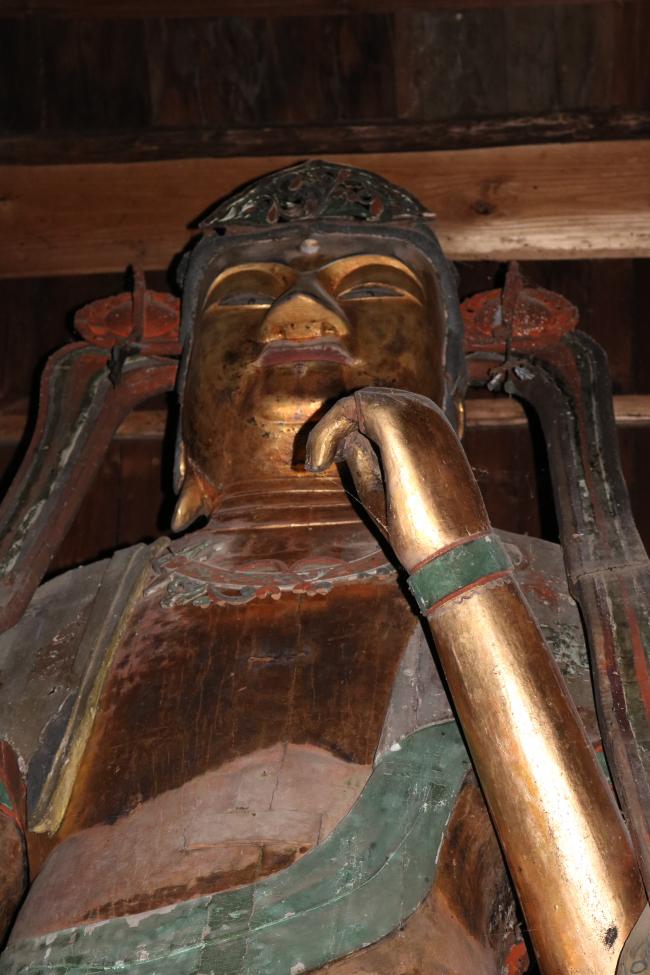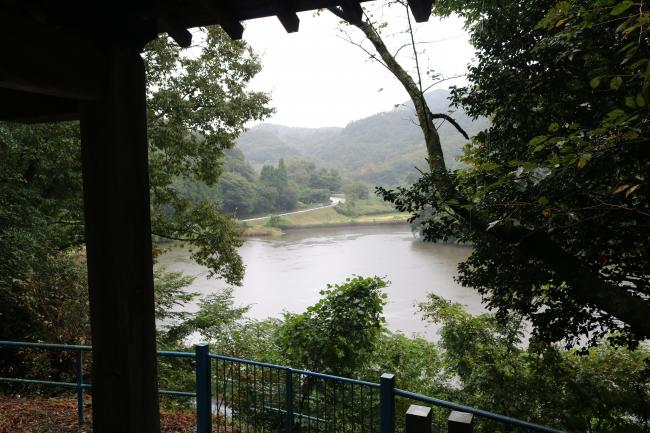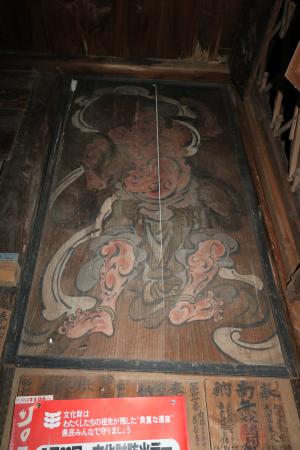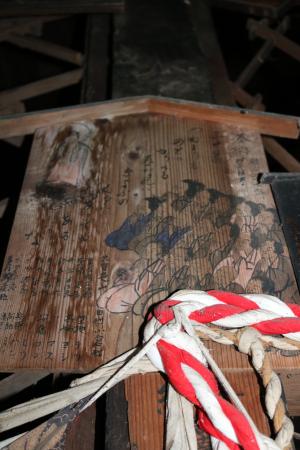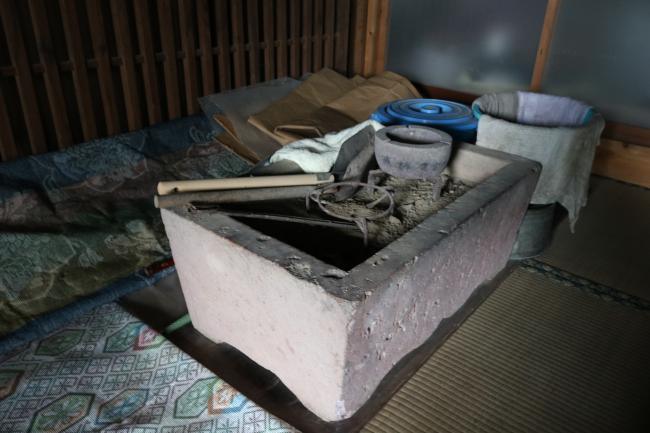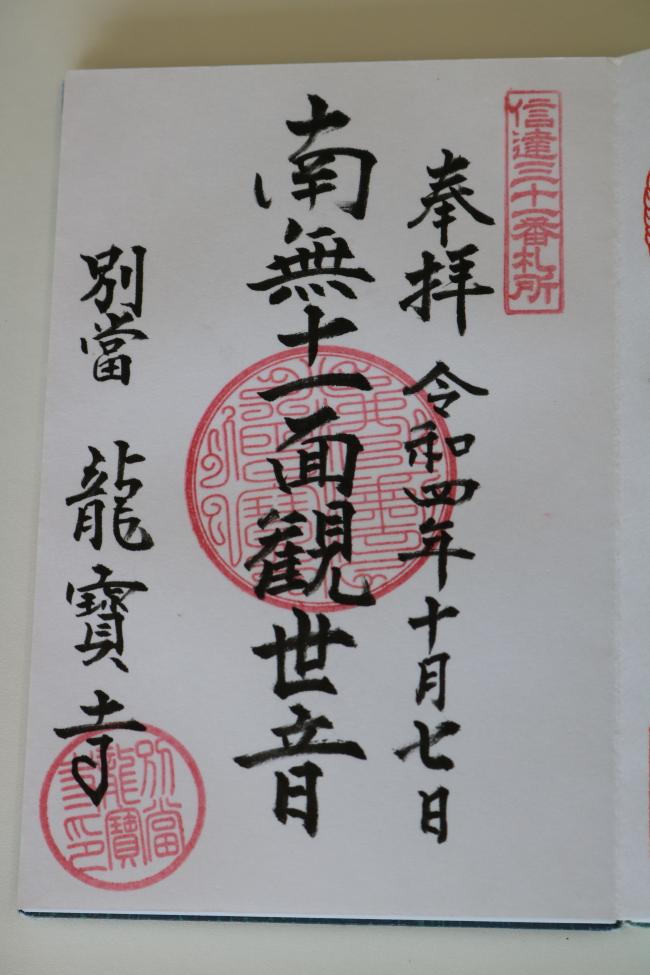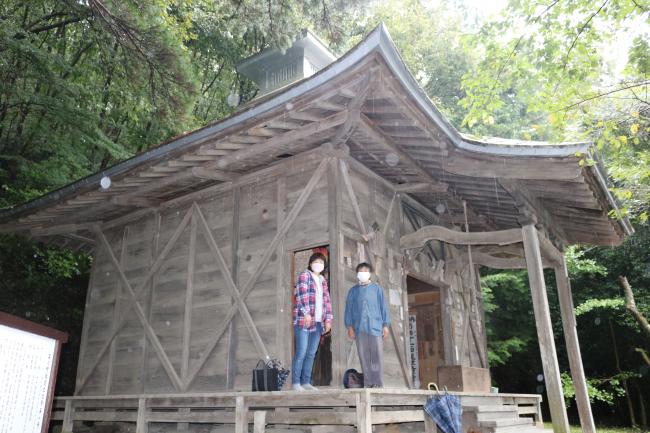本文
September's English Experience ・ 9月の英語体験
In September, Date City’s kindergarteners returned from their summer vacation full of energy, and eager to experience more English.
9月には、伊達市の幼稚園児が夏休みから元気よく幼稚園に戻り、熱心に英語を体験したがっていました。
Despite their long vacation, none of them had forgotten how to perform our first task: singing and dancing Head, Shoulders, Knees and Toes.
長く休んだのに、皆さんは最初の活動を覚えていました: 頭・肩・膝・爪先の歌と踊り
This was followed by Simon Says; which, beginning this month, is in turn followed by the game Zookeeper Says.
続いては「船長さんの命令ゲーム」で、その後は「動物園長さんの命令ゲーム」でした(9月からの活動です)。
As the zookeeper, I instructed the children to move in imitation of various animals.
動物園長として、子ども達に色んな動物のように動くよう命令しました。
“Jump like a rabbit” was my first order, to which all the children leapt to attention.
「ウサギのように跳ぶ」が僕の最初の発令で、子ども達は皆高く跳びました。
After leaving the zoo, we visited a farm, to sing the traditional English children’s song Bingo.
舞台は“動物園”から“農場”に変わり、「ビンゴ」という英語の伝統的な童謡を歌いました。
Admittedly, the addition of a hungry shark is likely a deviation from tradition.
本来は登場しませんが、僕の教えるビンゴには腹ペコのサメも登場します。
When the song (and the shark’s hunger) finally came to an end, it was time to turn a new page.
歌が終わったら、新しいページをめくる時間になりました。
Actually, around twenty pages, while I read a story about a teddy bear.
今回はクマのぬいぐるみについての絵本で、20ページほど読みました。
Each year, starting with the September English Experience, I have read large English-language picture books to the children.
毎年9月の英語体験から、大判の絵本を英語で子ども達に読み聞かせています。
To my continual surprise, they always find these books highly interesting, and listen with enthusiastic engagement; this time was no exception.
子ども達は毎回面白そうに聞いてくれます。例にもれず、今回も興味津々に聞いてくれました。
Yet the best was yet to come.
しかし、最高に楽しい時間はまだまだこれからです。
Inspired by the plot of the month’s picture book, I adhered a teddy bear torso to the wall of the playroom.
その日の絵本をきっかけに、僕はクマの胴体を遊戯室の壁に付けました。
I then had all the children line up before it, one line each for boys and girls.
その後、熊の胴体を前に子ども達全員に列で並んでもらいました。
I gave the head of each line a part of the bear’s body, such as an eye or arm, and sent them forth.
目玉や腕などの熊の体の部位を2人の先頭の子どもに渡して、壁の方に近づいてもらいました。
They did their best to attach those pieces to the correct location.
子ども達は正しい所に貼り付けるように頑張りました。
Or at least, somewhere naturally feasible.
正しい位置に貼れるか。不自然じゃないか。
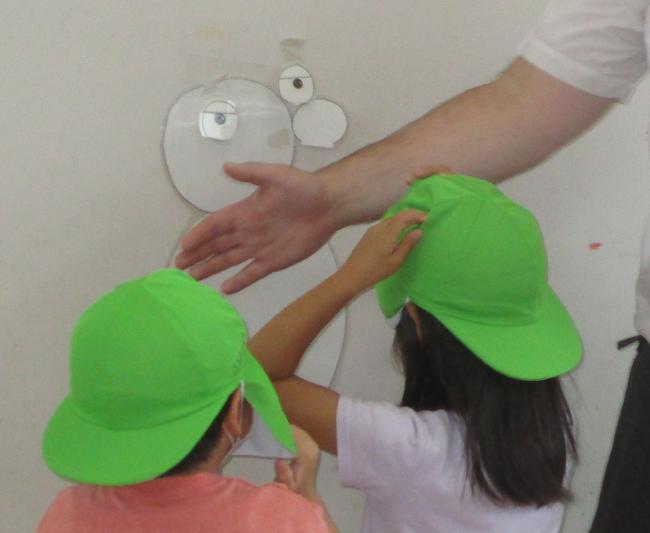
In truth, attachment somewhere seemingly permissible under Mother Nature proved to be a bit of a challenge.
正しい位置に貼りつけるのは結構難しかったようです。
Granted, my stipulation that the children keep their eyes covered might have been a contributing factor.
きっと、僕が決めた「子ども達は目隠ししなければならない」というルールが原因でしょうね。
I did kindly allow all the children to uncover their eyes in time to receive that month’s present; you can see what it looks like through the link below.
でも9月のプレゼントを配る前には、ちゃんと目隠しを外してもらいました。愛読者の皆さんは下のリンクを開くと見られます。
Keep your eyes peeled for the next CIR Update!
次の国際交流員日記
(Posted by: Tony ・ 作成者:トニー)
The Kannon of Chōkoku Temple・ 長谷寺観音
After finding the Kannon of Rishō Temple near the bank of the Hirose River, I used Prefectural Route 102 to travel up the Shiono River towards the community of Shirane.
広瀬川の近くにある利生寺観音に行った後、塩野川沿いの県道102を通って白根集落へ向かいました。
Here, the Kannon of Chōkoku Temple is also located on a river bank, offering a fine view from inside the Kannon hall.
ここでは、長谷寺観音も川の近くにありますので、観音堂からの景色が美しいです。
The similarities continue: for when I visited the Kannon of Rishō Temple, I encountered a Buddhist statue too large for its cabinet; yet here I encountered a Buddhist statue too large for its building.
利生寺観音と長谷寺観音にはほかにも似ている点があります。利生寺観音では、厨子には大きすぎる仏像がありました。長谷寺観音の仏像も観音堂には大きすぎます。
As you just may be able to see in the photograph, the head of the main image of veneration juts out through the ceiling.
写真でも確認できますが、御本尊の頭は天井からはみ出ます。
And as you’ve probably noticed, this statue is made of wood – all three-point-six-five meters of it.
そしてご覧の通り、この仏像は3.65メートルの木像であります。
Although wooden, it is covered with copious amounts of gold flake.
木像であっても、金箔をたくさん着せています。
So far, most of the main images of veneration I’ve been shown have been small metal sculptures (such as the Kannon of Rishō Temple and the Kannon of Hōju Temple), so a large wooden statue sticks out among the Shintatsu 33.
今まで見せて頂いた御本尊はほとんど金属製でした(例えば、利生寺観音や宝寿寺観音)。ですから、長谷寺観音のような大きな木像は信達三十三観音の中でも珍しいです。
Actually, it was while contemplating this image of Kannon that I became enlightened to the certain advantages wooden statues have in Japan over those of metal or stone: made of a common material, wooden statues are less likely to get stolen; they are easier to move up a hillside; and they seem to handle earthquakes fairly well.
観音様を拝見している間、日本の木像の良さに気付きました。それは、石や金属より通俗的な材質から作られているので窃盗に遭う可能性が低いこと、また、山腹などまでの移動がより楽になること、そして地震をよく乗り切られることです。
It is even said that the Kannon residing here was originally found floating in the Shiono River, a feat that would have been more difficult for a statue made of stone or metal.
さらに、この長谷寺の観音様は塩野川を流れて来たと言われています。たしかに、石製や金属製の像ならば考えにくいでしょう。
The Kannon hall’s other works of art, wooden or otherwise, were presumably donations from the faithful (and not from the river).
観音堂にある他の作品は川ではなく、信者からの寄贈だと思います。
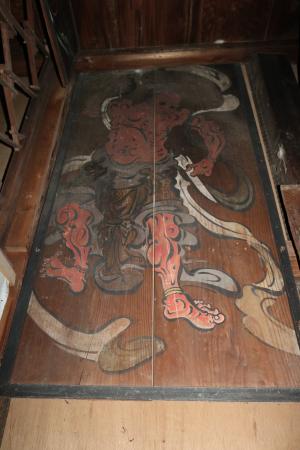
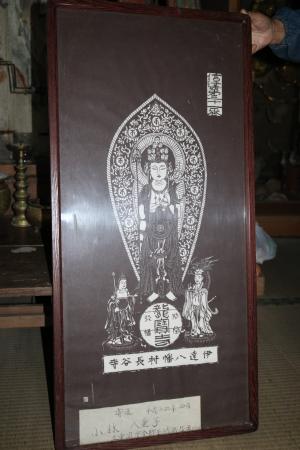
Yet my favorite item inside the Kannon hall was the antique space heater.
また、観音堂にあった伝統的な火鉢が僕はとても大好きでした。
Despite the slight chill brought about by the day’s rainy weather, we refrained from using it.
その日は雨天の影響で少し寒かったので火鉢で暖まりたかったですが、僕達は遠慮することにしました。
Considering that we were admiring a precious wooden statue inside an aged wooden building within a heavily wooded area, this was probably a good idea.
森にある古き良き木造建築物の中に大切に保管された木像を拝見しに来ましたので仕方ないでしょう。
Regardless of the weather, I am grateful for the warm welcome given me by the community members and kind Buddhist cleric, who took time to show me this local treasure.
あいにくの天気と関係なく、暖かく歓迎し案内してくださった地域の方と優しいお坊さん、誠にありがとうございました。
I must also thank the latter for leaving his mark in my book of seals.
そのお坊さんに素敵な御朱印も頂きました。
My next stop was at that cleric’s home temple, where I was treated with seeing a multitude of smaller statues.
僕の次の行き先はその優しいお坊さんのお寺で、多くのより小さな仏像が拝見できました。
Look forward to it!
お楽しみに!
(Posted by: Tony ・ 作成者:トニー)

